Jay L. Wile's Blog, page 11
August 10, 2020
Why Are Children Less Susceptible to COVID-19?

Children make up less than 2% of all identified COVID-19 cases. This is unusual, since they make up 20-30% of influenza cases. Why is COVID-19 so much rarer in children? A study from the Icahn School of Medicine at Mount Sinai Hospital in New York might have found the answer. Cells found in the nose, lungs, veins, and other parts of the body sometimes have an enzyme called ACE2 in their membranes. The enzyme is important, because it can participate in a process that lowers blood pressure when necessary. Studies show that the virus which causes COVID-19 (SARS-CoV-2) attacks cells by attaching to that enzyme.
The researchers examined nasal tissue from people between the ages of 4 and 60. The tissue collection had already been done between 2015 and 2018 for a research study on asthma. The researchers specifically looked at how much the gene that makes ACE2 was expressed. The more the gene is expressed, the more ACE2 is made. They found that the youngest children expressed the gene the least, older children expressed it more, young adults even more, and older adults even more. Thus, the younger you are, the fewer ACE2 proteins in the cells that line your nasal cavity, so the fewer places the virus has from which to attack. As a result, the less likely you are to be infected.
Because of the nature of the original study for which the tissue was collected, nearly half of the people from whom the tissue came had asthma. Also, they didn’t have tissue from anyone over 60 years of age. Thus, the sample is not truly representative of the nation as a whole. Nevertheless, the results are very intriguing, and they seem to explain why this respiratory virus affects children differently from most common respiratory viruses.
The post Why Are Children Less Susceptible to COVID-19? appeared first on Proslogion.
July 27, 2020
Please DO NOT Get Your COVID-19 Information from Social Media!
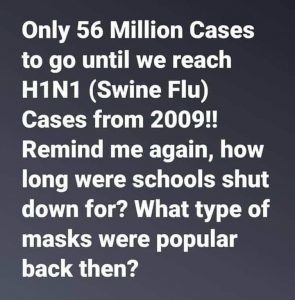 So far, I have written three articles about how horrible social media is as a source of scientific information (see here, here, and here). Facebook might be a great way to find out what your friends are eating, but it is one of the worst places you can go to learn about science, especially the COVID-19 pandemic. That’s because lots of people (left, right, and center) have decided to politicize the pandemic, and the unscrupulous among them have transformed science from its true nature (a very imperfect mode of inquiry) into a weapon. Unfortunately, many people don’t recognize weaponized science, and as a result, they tend to share things that fit their political views, regardless of whether or not they are accurate.
So far, I have written three articles about how horrible social media is as a source of scientific information (see here, here, and here). Facebook might be a great way to find out what your friends are eating, but it is one of the worst places you can go to learn about science, especially the COVID-19 pandemic. That’s because lots of people (left, right, and center) have decided to politicize the pandemic, and the unscrupulous among them have transformed science from its true nature (a very imperfect mode of inquiry) into a weapon. Unfortunately, many people don’t recognize weaponized science, and as a result, they tend to share things that fit their political views, regardless of whether or not they are accurate.
Consider, for example, the statement shown above. I have seen it on my Facebook feed at least a dozen times. While the statement is factually accurate, it supports a false narrative. Yes, there have been roughly 4 million cases of COVID-19 in the U.S. so far, and there were estimated to be 60 million cases of H1N1 during the 2009 pandemic. So the H1N1 pandemic of 2009 was “worse” than the COVID-19 pandemic today. Therefore, all the precautions we are taking against COVID-19 (shutting down schools, wearing masks, etc.) are just a result of politicians trying to use the current pandemic to their advantage. Of course, that’s simply not true. The reason we are taking precautions against COVID-19 is that it is significantly more deadly than H1N1. Out of the estimated 60 million cases of H1N1 in 2009, there were only about 12,500 deaths. Out of the roughly 4 million cases of COVID-19, there have been almost 150,000 deaths. Since 15 times fewer cases have produced more than 10 times as many deaths, it is easy to understand why we are taking more precautions against this virus!
Just to give you one more example, yesterday I saw this statement on my Facebook feed:
The COVID-19 death rate without a vaccine is lower than the flu death rate with a vaccine.
As far as I can tell, there is no way you can massage the data to make that statement even factually correct. For the 2018-2019 flu season, there were estimated to be more than 35.5 million cases and 34,200 deaths. Once again, for the current COVID-19 pandemic, there have been roughly 9 times fewer cases, but about 5 times as many deaths.
Now please understand that I am certain the number of COVID-19 deaths are being overreported. But they aren’t being overreported to the point where you can conceivably compare this current pandemic with the H1N1 pandemic of 2009 or the seasonal flu. In the same way, I know that politicians are using this pandemic to their advantage, but that doesn’t mean it isn’t real and isn’t serious.
So when it comes to getting information about the pandemic, choose your sources wisely, and do not include social media on the list!
The post Please DO NOT Get Your COVID-19 Information from Social Media! appeared first on Proslogion.
July 22, 2020
A Very Promising Possibility for COVID-19 Treatment
 A person using an inhaler, which is the way the drug in the study is delivered (click for credit)
A person using an inhaler, which is the way the drug in the study is delivered (click for credit)There are several drug treatments that are currently being investigated for COVID-19. However, of all the studies I have seen so far, this one looks the most promising. In the study, UK-based Synairgen chose 101 hospital patients and randomly assigned them to get a placebo or a chemical called “interferon beta,” a protein that has antiviral properties and is naturally produced by the human body. Both the placebo and the protein were administered through inhalers so that they ended up in the lungs. Over the roughly two-month study, patients getting the protein were 79% less likely to develop severe symptoms that required a ventilator. Also, while three of the patients who received the placebo died, none of those who received the protein died.
The study seems well designed. For example, patient ages were very similar. The placebo group’s average age was 56.5 years, while the protein group’s average age was 57.8 years. The difference is very small, but note that it favors the placebo group. In other words, since the patients getting the placebo were younger, they were automatically a bit less at risk than the protein group. In addition, the average amount of time the patients exhibited COVID-19 symptoms before getting the treatment was very similar, 9.8 days for the placebo group and 9.6 days for the protein group.
I do, however, see two potential problems. First, the number of patients in the study is small. As a result, they made a lot of other interesting observations, but they couldn’t determine whether those observations were the result of the protein or random chance. For example, the patients who received the protein were roughly twice as likely to recover within the two-month period than the ones who did not receive the protein. However, because the number of patients is so small, mathematics tells us it is possible that this result is caused by chance and not by a difference between the placebo and the protein.
The other problem, of course, is that this study was performed and reported by the pharmaceutical company that wants to produce and sell the drug. Initially, of course, this makes sense. Studies cost money, so the company that wants to make and sell the drug should spend the money to do the studies. However, before the drug can be approved for general use, there will need to be a larger study with independent analysis. I eagerly await that kind of study.
The post A Very Promising Possibility for COVID-19 Treatment appeared first on Proslogion.
July 20, 2020
Science in the Atomic Age is Now Available!
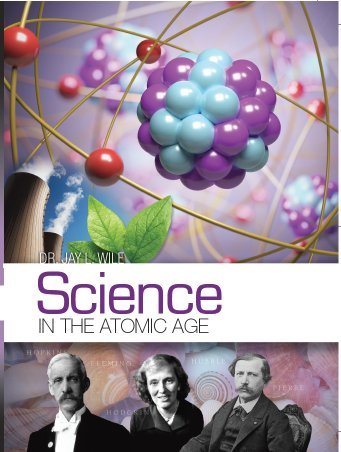 The pandemic delayed it, but Science in the Atomic Age has finally been finished and is available for purchase! The course is targeted at 7th/8th grade, depending on the student’s math level and experience with science. In general, students who are two years from starting algebra and have covered at least a couple of years’ worth of elementary science should take this course. Most publicly-schooled students would take a course like this in 8th grade, but homeschooled students at this age are generally a grade level ahead of their publicly-schooled counterparts. While it can be viewed as a continuation of my Science Through History series, students who have covered elementary science in some other way can use it as well.
The pandemic delayed it, but Science in the Atomic Age has finally been finished and is available for purchase! The course is targeted at 7th/8th grade, depending on the student’s math level and experience with science. In general, students who are two years from starting algebra and have covered at least a couple of years’ worth of elementary science should take this course. Most publicly-schooled students would take a course like this in 8th grade, but homeschooled students at this age are generally a grade level ahead of their publicly-schooled counterparts. While it can be viewed as a continuation of my Science Through History series, students who have covered elementary science in some other way can use it as well.
The course is arranged so that students get a general introduction to science. It does this by exploring science through the levels of organization found in creation. First, it covers the atom. Students learn not only how scientists currently view the atom, but also how scientists arrived at that view. Throughout the discussion, I emphasize the way scientists dealt with the unknown. When Bohr proposed his model, which was based on quantum theory, he freely admitted that it was crazy, but he thought it had some merit because it could explain experimental results that no other model could explain. I share one of his iconic quotes with the students:1
Anyone who is not shocked by quantum theory has not understood it.
I try to emphasize that Bohr couldn’t explain how his model was consistent with the science that was known at the time. However, he was forced to think it had merit because it was so successful at explaining and predicting the results of experiments.
I then move on to molecules, the next level of organization in creation. Students learn about how elements come together to form both ionic and covalent compounds. Along the way, they learn that our modern theory of chemical bonding is based on an incorrect model proposed by Gilbert Lewis. Despite the fact that his model was incorrect, he ended up stumbling on a very important principle that guides our current view of how and why molecules form. As a result, one of the main tools we use to understand the basic structure of molecules is named after him. We call it the “Lewis structure,” and students learn how to construct the most basic version.
Students then learn the next level of organization in creation: the cellular organelle. Once again, students learn the history of how we discovered the major organelles, and they see how scientists dealt with the unknown as it was being investigated. With a basic knowledge of cellular organelles, students then learn about cells and cell theory, which represent the next level of organization in creation.
Of course, cells come together to make tissues, so students learn the basics of what tissues are. They use that knowledge to learn about the next level of organization: tissues combining to make organs. That leads to the next level: organ systems. The human body is the main setting in which students learn about these levels of organization, so by the time students have covered tissues, organs, and organ systems, they have a good understanding of the human body. Because of the age of the target audience, the reproductive system is not covered.
Organ systems make organisms, the next level of organization. Organisms group together to form populations. Populations then form communities, which then form ecosystems, which then form biomes. Biomes come together to form the biosphere, which is earth. In each of these levels of organization, the design that is apparent in nature is emphasized. In fact, when students learn about the biosphere, they learn about scientists’ attempt to design their own biosphere, which was called “Biosphere 2.” Students learn why it wasn’t successful, illustrating that even with millions of dollars and years to plan and implement, human design is positively crude compared to God’s designs.
Because I am a young-earth creationist, there are a few references to the science that points to a young earth. When I discuss the Scientific Method, for example, I discuss Russel Humphreys’s model for planetary magnetic fields, which is the only model that has made successful predictions about planetary magnetic fields that were unknown at the time of the prediction. I also mention that his model requires a young earth. When discussing tissues, I show students soft cells recovered from dinosaur fossils (courtesy of the Dinosaur Soft Tissue Research Institute). I show them to illustrate that we know the tissue they come from because the cells are characteristic of it. However, I also mention that these cells are strong evidence that the fossils are not millions of years old. Also, when discussing populations, I discuss extinction. I make the point that many organisms were thought to be extinct based on their fossil record, but we now know they are not. I discuss how this is evidence that there is something wrong with the old-earth interpretation of the fossil record. These are the only references to the age of the earth, and they make up less than 5% of the text.
Like my elementary courses, this course is very hands-on. There are 59 experiments or hands-on activities in the course, and they use common, household items. Some of my favorites include an example of what happens when there is too much oxygen in the air, using Scrabble tiles to illustrate the myelin sheath’s function in nerves, a quick version of the “rubberized bone” experiment, using pencils and a candle to see diffraction, and comparing how vegetable oil freezes to how water freezes. Throughout the reading, students must answer “Comprehension Check” questions. They are told that once they answer a set of those questions, they are done for the day. That way, they know when to stop doing science each day, and they know where to pick up their studies on the next school day.
If you would like to see some samples of the course, you can go to the publisher’s website. Scroll down and click on “Product Resources.” There, you will find a link to a “Text Sample,” which is the entire second chapter. The first chapter is short and very basic, teaching students how to perform and document experiments. The second chapter is more reflective of the book’s rigor, which is why the publisher shows it as the sample. Also, I have posted two short excerpts from the book here and here.
REFERENCE
The post Science in the Atomic Age is Now Available! appeared first on Proslogion.
July 16, 2020
Can a COVID-19 Virus Communicate with Other COVID-19 Viruses?
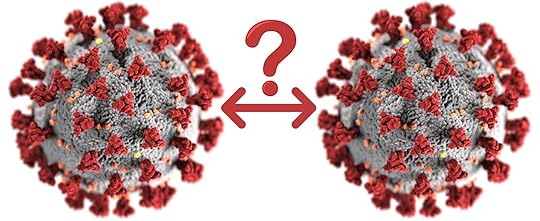
I am writing this post because a reader asked me a question that I thought was very interesting and relates to a broader concept in biology. Before I answer her question, however, I want to make an important point about the virus that causes COVID-19 and how we should react to it. A few weeks ago, I gave the commencement address to a group of homeschoolers. Before I started my official remarks, I said this:
I am not going to say much about this virus, but I will say this: As a scientist, let me assure you that no one really knows what we should be doing. There are a lot of experts saying a lot of different things, and you should listen to all of them. Then, you should decide what works best for you and your family, and you should start doing it. But once you decide what you and your family should be doing, please please please show grace to those who choose to do something different. Since the experts can’t agree on a proper course of action, there is no reason to expect your neighbor to agree with your course of action.
I think that is the best way to approach this pandemic. The experts still can’t agree on exactly what to do because we just don’t know enough about this virus to make definitive choices. As a result of this ignorance, we must all muddle through this as best we can and realize that none of us has all the correct answers.
Now let me share my reader’s question:
Recently I came across a discussion online about quorum sensing in viruses. The initial topic had been the difference between groups meeting indoors verses outdoors, as many churches are now doing. I had never heard of quorum sensing before, so I did a little research, but I wondered if you would consider addressing this sometime. It sounds pretty fascinating to think viruses and such can actually monitor their environment.
If you have never heard the term “quorum sensing,” it is a phenomenon that as far as I can tell was first discovered in bacteria. There are bacterial behaviors that require a certain number of individuals before the behavior produces a benefit, so bacteria need to know how many individuals from their species are in the area. As a result, each individual releases a specific chemical into its environment. Other bacteria of the same species sense the concentration of that chemical, and when the concentration reaches a certain level, the bacteria know there are enough individuals to make the behavior beneficial, so they start doing it.
For example, some infectious bacteria don’t attack their host right away. Instead, they stay as inconspicuous as possible, releasing their quorum-sensing chemical and doing everything they can to avoid the host’s immune system. They wait until there are enough individuals present in the host to overwhelm its immune system, and then they attack. In other words, they wait for a quorum of bacteria before they begin to assault their host.
My reader’s question is a reasonable one. If pathogenic bacteria use quorum-sensing, could viruses like the one that causes COVID-19 do the same thing? Well, while quorum sensing has been more extensively studied in bacteria, we do know that at least one kind of virus does it. In 2017, some researchers were studying a type of virus known as a bacteriophage, which infects bacteria. They noticed that when a virus was successful at invading a bacterium, it would release a chemical message telling the other viruses about its success.
Why would a virus do that? Because a bacteriophage has a choice once it infects a host. It can use the bacterium’s chemical machinery to churn out copies of itself until the bacterium bursts, releasing those copies to infect more bacteria. That’s the end of what is called the “lytic pathway,” and it allows lots of viruses to be released into the environment to infect lots more bacteria. However, if there aren’t a lot of bacteria left to infect, most of those viruses won’t find a host, which is bad for the viruses. As a result, the bacteriophage can just wait inside its host, biding its time until more hosts enter the area. This is called “lysogeny.” It isn’t great for the virus, but it is better than releasing copies into a world where there are few hosts to infect. In this case, then, the bacteriophage uses quorum sensing to determine whether to finish the lytic pathway or start lysogeny.
Now, of course, the virus we are all currently worried about is the one that causes COVID-19. Can it engage in quorum sensing? If so, that might explain why there are so many asymptomatic cases. If you get a small dose of the virus, there isn’t a quorum to attack you, so your body’s immune system eradicates the individuals before they mount their attack. However, if you get a large dose of the virus, the viruses see that there is a quorum, and they attack, making you sick.
The short answer to the question is the same one we must currently give to many questions regarding this virus: We don’t know. However, it is possible. Why do I say that? First, if a bacteriophage can do it, other viruses can do it as well. Second, we know the various genomes of the virus that causes COVID-19, and there are sections of unknown function that could produce and detect such chemicals. Thus, there is at least a possibility that a quorum-sensing mechanism exists in the virus. Until we know a lot more about this virus, however, we just can’t say anything for sure.
While it might seem scary that viruses can “talk” to one another and coordinate their attack, please understand that if they can, it gives us another way to fight them. After all, suppose we can develop a medicine that destroys their quorum-sensing chemical. If we can, then the viruses will never attack, because they will never think there is a quorum. Of course, deciding whether or not that is a viable strategy depends on finding out a lot more about the virus.
The post Can a COVID-19 Virus Communicate with Other COVID-19 Viruses? appeared first on Proslogion.
July 10, 2020
C.S. Lewis Never Said That
 Perhaps it’s the academic in me, but I am always bothered when I see a quote attributed to someone who never said or wrote it. The situation becomes even more frustrating when it is someone whose work I know well. I was scrolling through my Facebook feed this morning and saw the following:
Perhaps it’s the academic in me, but I am always bothered when I see a quote attributed to someone who never said or wrote it. The situation becomes even more frustrating when it is someone whose work I know well. I was scrolling through my Facebook feed this morning and saw the following:
You do not have a soul.
You are a soul.
You have a body.
-C.S. Lewis
While I appreciate the thought, it was not something C.S. Lewis ever wrote, and I can’t find any record of anyone saying that he heard Lewis say that. In fact, the phrase was written several years before Lewis was born.
It can be found in a magazine called The British Friend, which was an important publication among Quakers in the United Kingdom. The author is discussing the way a Quaker should mourn the death of a loved one. To emphasize that the body is a temporary vessel but the soul is eternal, he states:1
“Never tell a child,” said George Macdonald, “you have a soul. Teach him, you are a soul; you have a body.” As we learn to think of things always in this order, that the body is but the temporary clothing of the soul, our views of death and the unbefittingness of customary mourning will approximate to those of Friends of earlier generations.
Since the author attributes this quote to George Macdonald, a minister Lewis respected and admired, you might say that perhaps C.S. Lewis said this in a lecture, quoting George Macdonald. That could be true, but I seriously doubt the Oxford Don would do that without giving proper attribution!
REFERENCE
The post C.S. Lewis Never Said That appeared first on Proslogion.
July 9, 2020
Yes, the Coronavirus Bill Was Introduced in 2019. No, It’s Not Because the Pandemic Was Planned.
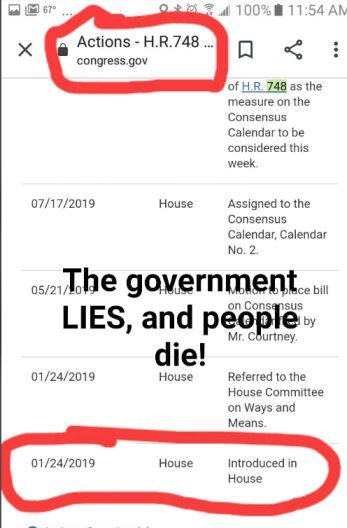 ***PLEASE NOTE: This is not a political post, and all political comments will be deleted without mercy.***
***PLEASE NOTE: This is not a political post, and all political comments will be deleted without mercy.***
A good friend of mine asked me about something he had seen on Facebook. It wasn’t this particular post, but the message was the same. The image on the left comes from the post I linked. As it shows, the Coronavirus bill that became law on March 27, 2020 (called the CARES ACT) was introduced in the U.S. House of Representatives on January 24, 2019. That’s long before we knew about the COVID-19 pandemic. How in the world could this bill be introduced in the House before anyone knew about the virus? As the Facebook post says:
Attention: The conspiracy theorists were right in calling this a “plandemic” and the proof can be found at www.congress.gov. Look up H.R. 748- CARES Act (the Bill that was passed for Coronavirus relief).
To someone uninitiated in the vagaries of legislation in the United States, the fact that the bill was introduced almost a year before anyone heard about the novel Coronavirus does seem to confirm that the entire pandemic was planned. However, like most conspiracy theories, a bit of education is all it takes to understand the real reason behind this odd timeline.
The U.S. Constitution says that all spending bills must originate in the U.S. House of Representatives. Thus, to be Constitutional, any spending bill (including the CARES act) must originate in the House. After it passes the House, it moves on to the Senate for consideration. During that process, the Senate can amend the bill, changing things it doesn’t like. However, once the Senate passes an amended bill, it must go back to the House, and it cannot be sent to the President for his signature until the House concurs with the Senate’s version of the bill.
Because Congress wanted the CARES act to move quickly, it essentially skipped the first step. It did so by taking a bill that had already passed the House and been sent to the Senate. That bill was HR 748, which was originally entitled, “Middle Class Health Benefits Tax Repeal Act of 2019.” Its intent was to repeal a tax that the Affordable Care Act placed on “Cadillac” health insurance plans. It passed the House but was never voted on by the Senate. As a result, it just “sat” in the Senate until March of 2020.
At that point, the pandemic was upon us, and the Senate decided it needed to pass a relief bill fast. It took HR 748, stripped the bill of its content, changed the title, and “amended” it by writing an entirely new bill. The details of the bill were crafted with input from the House leadership so that once it passed the Senate, the House would quickly concur with the “amendment” so that it could be signed by the President, who had also been consulted to ensure that he would sign it right away.
So the strange timeline of the CARES act is the result of a “loophole” that the Senate uses in order to speed up the passage of a spending bill, not because the pandemic had been planned ahead of time. You might wonder if using such a “loophole” is really Constitutional. I personally don’t have enough expertise to figure that one out. I have read legal opinions on both sides of the issue, and they just left me with a headache. However, I can tell you that this is not the first time the Senate has used it. In fact, the Affordable Care Act, which was originally called the “Service Members Home Ownership Tax Act of 2009,” was passed in the same way.
July 6, 2020
Another Peer-Reviewed Paper Favoring Intelligent Design
 A figure from the paper being discussed, showing how a protein complex (left) can be converted to a graph (middle) to analyze how its parts relate to one another.
A figure from the paper being discussed, showing how a protein complex (left) can be converted to a graph (middle) to analyze how its parts relate to one another.The more we learn about the universe, the more we see that it is a product of design. Indeed, for quite some time now, many scientists have recognized that the universe is finely-tuned for life. There are many parameters that govern how things happen in the universe, and they all have the characteristics of being just what they need to be for life to flourish. An electron, for example, is precisely as negative as the proton is positive, despite the fact that they are very, very different particles. If the charges were off by as little as one billionth of one percent, the resulting electrical imbalance in molecules would make even very small objects too unstable to form.1 The most obvious explanation for such fine-tuning is that the universe has been designed for life.
Now, of course, if you don’t want to believe that the universe is a product of design, you can offer any number of desperate alternatives. Perhaps we are just very fortunate. After all, if the universe weren’t designed for life, we wouldn’t be here to study it, so the very fact that we can discover these relationships tells us that the universe just happened to evolve into one that appears to be finely-tuned for life. You could also suggest that there are a ridiculously large number of universes out there. Most of them don’t have life, because they don’t have the proper parameters. However, if there are many, many universes, there’s a high likelihood that at least one will have all the right parameters, making it appear to be finely-tuned for life. You could also argue that there are actually a lot of combinations of parameters that might work for life; we just don’t know them. In that case, the universe’s apparent fine-tuning is an illusion.
While I think the scientific data clearly demonstrate that the universe is designed, I have always said that the most obvious case for design can be put forth by biology. Even the simplest life form on this planet is more complex and well-engineered than anything made by human technology, and most of the biological world makes our best inventions look positively crude by comparison. Well a reader (Victor Ferreira da Silva) sent me a paper in the secular, peer-reviewed literature that claims to have confirmed this fact.
In the Journal of Theoretical Biology, two mathematicians (one in Norway and the other in Sweden2 ) report:
Fine-tuning has received much attention in physics, and it states that the fundamental constants of physics are finely tuned to precise values for a rich chemistry and life permittance. It has not yet been applied in a broad manner to molecular biology.
They decide to do that, and their conclusion is very straightforward:
…fine-tuning is a clear feature of biological systems. Indeed, fine-tuning is even more extreme in biological systems than in inorganic systems. It is detectable within the realm of scientific methodology. Biology is inherently more complicated than the large-scale universe and so fine-tuning is even more a feature.
How did they reach that conclusion? They started with the molecules upon which life depends: proteins. Reviewing the scientific literature, they came to the conclusion that the chance of forming a functional protein is 1 in 100,000,000,000,000,000,000,000,000,000,000,000,000,000,000,000,000. However, they note that this is just the tip of the iceberg. Lots of proteins work together, forming groups that interact with one another in order to perform a specific chemical task. In the image at the top of the page, for example, a protein complex (left) is analyzed according to the interactions of the various proteins out of which it is composed. They say that even if you ignore the low probability of forming each individual protein, the probability of proteins forming so that they can interact in the observed way is also absurdly low. As a result, you have a ridiculously low probability that individual proteins can be produced by random chemical interactions, and an absurdly low probability that such randomly-produced proteins can form the complexes needed for life. This means the chance of such protein complexes forming as a result of random processes is (ridiculously low)x(absurdly low).
The authors perform a similar analysis on the way multiple cells interact to form cellular networks. Once again, they come to the conclusion that the probability of cells forming these networks through random interactions is exceedingly low. As a result, they say that the best explanation for how these systems exist is that their parts are finely-tuned to one another. The probabilities indicate that this fine-tuning is more extreme than what is seen in the parameters that govern the universe as a whole.
It will come as no surprise that I agree with the authors’ conclusions. However, what pleased me the most was how much the authors referred to works from the Intelligent Design community. Studies by Dembski, Behe, Ewert, and Axe are all referenced. In fact, they use the term “Behe-system” to refer to a system
…composed of several well-matched, interacting modules that contribute to the basic function, wherein the removal of any one of the modules causes the system to effectively cease functioning.
They even reference the works of young-earth creationist John Sanford.
Of course, they also reference the works of staunch anti-Intelligent Design people, such as Miller, Koonin, Pallen, and Matzke, as they should. Nevertheless, it is really good to see that the works of creationists and Intelligent Design advocates are starting to positively influence the secular scientific literature.
NOTES
July 1, 2020
Climate Change Activist Issues an Apology, Which Forbes Censors
 Author Michael Shellenberger (click for credit)Author Michael Shellenberger’s career has been one of climate activisim. He was named one of Time magazine’s Heroes of the Environment back in 2008. He and co-author Ted Nordhaus wrote the ground-breaking book Break Through: From the Death of Environmentalism to the Politics of Possibility, which won the 2008 Green Book Award. He now runs Environmental Progress, which has two goals: to lift all humans out of poverty, and to save the natural environment.
Author Michael Shellenberger (click for credit)Author Michael Shellenberger’s career has been one of climate activisim. He was named one of Time magazine’s Heroes of the Environment back in 2008. He and co-author Ted Nordhaus wrote the ground-breaking book Break Through: From the Death of Environmentalism to the Politics of Possibility, which won the 2008 Green Book Award. He now runs Environmental Progress, which has two goals: to lift all humans out of poverty, and to save the natural environment.
Recently, he penned a letter that was originally published at the Forbes website. However, it was quickly taken down, because it didn’t conform to the narrative that Forbes is trying to impose. This isn’t the first time Forbes has published a reasonable article that was then removed for violating its orthodoxy, and it probably won’t be the last. After all, as more people learn the science behind global climate change, aka global warming, more articles challenging Forbes’ dogma will surface. Some of them will probably make it past the censors, but when their heresy is later exposed, they will be put on Forbes’ Index Librorum Prohibitorum.
Fortunately for all of us, Shellenberger’s organization has defied the Inquisition and has published the article that the censors at Forbes removed. I encourage you to read the entire article, but in brief, Shellenberger offers an apology on behalf of those who have been trying to frighten you regarding global climate change, aka global warming. Why is he apologizing? Because he knows enough science to realize that
Climate change is happening. It’s just not the end of the world. It’s not even our most serious environmental problem.
Unfortunately, as his letter says, he stayed silent about the science because he believes that cutting carbon-dioxide emissions is a good thing. Thus, he worked alongside the fear-mongers without speaking out against their anti-science rhetoric. Now, however, he thinks that the assault against science has gotten out of control, and he was forced speak out.
I encourage you to read his entire apology. Not only will you learn some good science, you will see how an honorable person admits that he acted wrongly.
June 29, 2020
A Scientist Turns From Atheism to the Truth
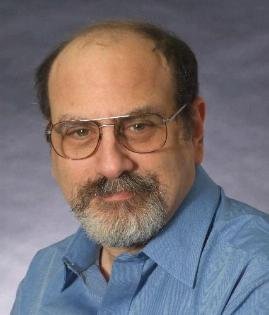 Dr. Sy Garte, scientist and former atheistDr. Sy Garte holds an earned Ph.D. in biochemistry from the City University of New York and a B.S. in chemistry from the City College of New York. He is an accomplished scientist, with over 200 publications in the peer-reviewed literature. Throughout his career, he held several very important positions, including Division Director of Physiological and Pathological Sciences at the Center for Scientific Review, which is responsible for thousands of grants that provide hundreds of millions of dollars to support important medical research. I didn’t know anything about him until one of my readers sent me an article he wrote in Christianity Today. I was immediately hooked by its title:
Dr. Sy Garte, scientist and former atheistDr. Sy Garte holds an earned Ph.D. in biochemistry from the City University of New York and a B.S. in chemistry from the City College of New York. He is an accomplished scientist, with over 200 publications in the peer-reviewed literature. Throughout his career, he held several very important positions, including Division Director of Physiological and Pathological Sciences at the Center for Scientific Review, which is responsible for thousands of grants that provide hundreds of millions of dollars to support important medical research. I didn’t know anything about him until one of my readers sent me an article he wrote in Christianity Today. I was immediately hooked by its title:
I Assumed Science Had All the Answers. Then I Started Asking Inconvenient Questions.
Essentially, Dr. Garte was raised a communist and an atheist. As a result, he relied on science to provide answers to all his questions. However, as he got older, he started asking questions to which science has no real answers. He then met some scientifically-minded Christians who led him to church. That led him to read the Bible, which he says he knew was false, even though he had never read it. Not surprisingly, he was surprised by what he read. Eventually, an Evangelical preacher on the radio led him to his Savior.
Because I am a scientist, I know a lot of people who think like Dr. Garte once did. Some of them believe science has all the answers because they were indoctrinated to believe it and simply won’t consider how absurd such an idea is. Others believe it because science has produced a lot of wonders that make our lives healthier, easier, and more enjoyable. Others believe it simply because they think it’s “cool” to say inane things like, “I believe in science.” I have many Facebook “friends” who fall into that last category. However, like Dr. Garte, anyone who understands science and thinks deeply about it will end up agreeing with Dr. Erwin Schrödinger, the man who gave us our modern view of the atom:1
…the scientific picture of the real world around me is very deficient. It gives a lot of factual information, puts all our experience in a magnificently consistent order, but is ghastly silent about all that is really near to our heart, that really matters to us. It cannot tell us a word about red and blue, bitter and sweet, physical pain and physical delight; it knows nothing of beautiful and ugly, good or bad, God and eternity. Science sometimes pretends to answer questions in these domains, but the answers are very often so silly that we are not inclined to take them seriously.
Obviously, Dr. Garte came to agree with Dr. Schrödinger, and he has now turned to the Source of real Truth, which is wonderful!
Dr. Garte has a blog that discusses science from a theological and philosophical point of view. Based on what I have read, there are a lot of things about which we disagree. However, I applaud what he is doing, and I agree 100% with how he summarized what he has learned since becoming a Christian:
I learned about the power of the Bible as a guide from God to the central questions of our existence. I learned that the true purpose of science is to describe how things are, not to engage in misplaced speculation about why the world is the way it is. I learned that modern atheist taunts about the purposelessness and meaninglessness of the universe and our own existence are not only false but destructive. Most importantly, I learned that nothing I have learned came through my own merit, but only from the grace of our Lord, whose love and mercy are beyond understanding.
REFERENCE
Jay L. Wile's Blog
- Jay L. Wile's profile
- 31 followers



